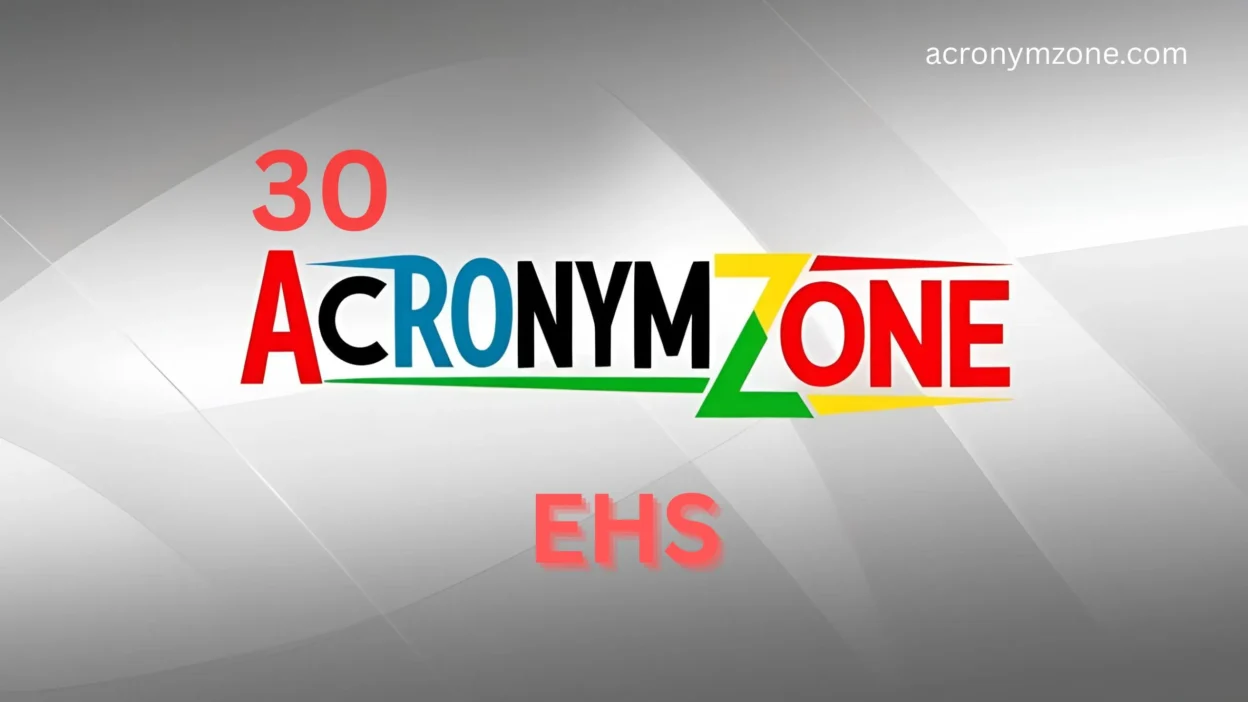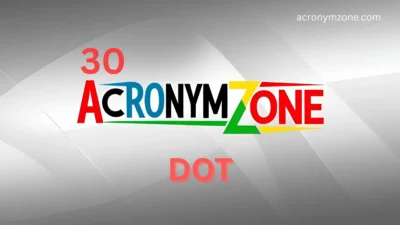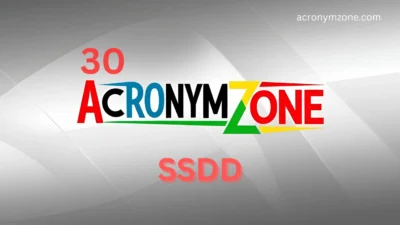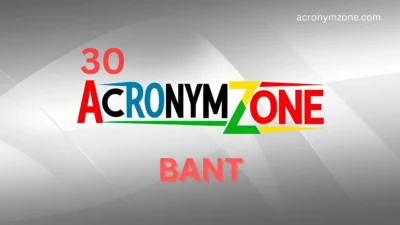In professional and safety-oriented environments, the term “EHS” is a familiar one. Standing for Environment, Health, and Safety, the EHS acronym represents a vital framework used by companies and institutions to promote well-being, prevent accidents, and maintain sustainable practices.
But what if you’re writing or communicating about EHS and want fresh, nuanced alternatives that express specific tones, values, or areas of emphasis—without always repeating the same three letters?
This article breaks down the meaning and emotional core of EHS, and introduces 30 powerful acronym-based alternatives. These alternatives can be used depending on your communication goals—whether you’re being technical, motivational, friendly, or policy-driven.
🌱 What Does the EHS Acronym Stand For?
At its core, EHS means:
- Environment – Protecting natural resources and reducing harm to ecosystems.
- Health – Ensuring the physical and mental well-being of employees and communities.
- Safety – Preventing injury, managing risk, and following compliance standards.
EHS is more than just policy—it’s a culture of responsibility, care, and proactive thinking. Whether on a construction site, in a corporate office, or at a school, EHS professionals aim to create spaces where people and the planet thrive.
💡 30 Acronym-Inspired Alternatives to EHS (with Usage Tips)
Let’s explore 30 creative and targeted alternatives to EHS. Each one reflects a different shade of meaning, emotional tone, or use-case scenario.
1. SAFE – Safety Awareness For Everyone
Use when promoting inclusivity in workplace safety.
“Our SAFE training covers all departments.”
2. CARE – Compliance, Accountability, Risk, Environment
Use for policy-heavy documents.
“The CARE policy outlines all site-specific requirements.”
3. LIVE – Lifestyle, Integrity, Vigilance, Environment
Use for wellness or public outreach programs.
“LIVE well, LIVE safe!”
4. HERO – Health, Environment, Risk, Operations
Use to motivate frontline workers.
“Be a HERO every shift—follow all protocols.”
5. SHAPE – Safety, Health, Awareness, Prevention, Environment
Use in educational posters or awareness drives.
“Together, we SHAPE a safer tomorrow.”
6. PRIME – Prevention, Responsibility, Inspection, Management, Environment
Use in compliance checklists.
“Use the PRIME method before entering confined spaces.”
7. PROTECT – People, Risk, Operations, Training, Environment, Compliance, Team
Use in internal safety initiatives.
“The PROTECT culture starts with leadership.”
8. HEART – Health, Environment, Awareness, Responsibility, Training
Use in campaigns that emphasize care and empathy.
“Put HEART into your safety habits.”
9. GUARD – Guidelines, Understanding, Assessment, Risk, Discipline
Use in risk assessments and manuals.
“The GUARD checklist must be signed before equipment use.”
10. PEACE – Prevention, Environment, Accountability, Care, Education
Use in sustainability and wellness messaging.
“Work in PEACE with nature and each other.”
11. AWARE – Act, Watch, Assess, Respond, Educate
Use in situational awareness training.
“Stay AWARE on every shift.”
12. THRIVE – Training, Health, Responsibility, Integrity, Vigilance, Environment
Use in wellness programs and HR initiatives.
“THRIVE is our employee-first health program.”
13. RISK – Responsibility, Inspection, Safety, Knowledge
Use in audit reports.
“The RISK score dropped due to updated training.”
14. VITAL – Vigilance, Integrity, Training, Accountability, Life
Use for emotionally powerful messaging.
“VITAL habits save lives.”
15. SHIELD – Safety, Health, Integrity, Environment, Leadership, Discipline
Use for fieldwork and protective protocols.
“Activate your SHIELD: safety first.”
16. GRACE – Guidelines, Responsibility, Awareness, Care, Environment
Use in soft-skill based training or culture building.
“Lead with GRACE—protect the people and the planet.”
17. ACT – Assess, Correct, Train
Use for emergency response protocols.
“In case of a spill, ACT immediately.”
18. BEACON – Behavior, Environment, Awareness, Compliance, Observation, Navigation
Use in behavior-based safety programs.
“Be a BEACON of safety on your team.”
19. FOCUS – Follow, Observe, Communicate, Understand, Stay-safe
Use in high-risk zones.
“Keep FOCUS in the lab at all times.”
20. READY – Risk, Environment, Awareness, Duty, You
Use for pre-shift huddles.
“Are you READY for today’s task?”
21. LIFT – Learn, Inspect, Follow-through, Train
Use in ergonomics or warehouse safety.
“Use the LIFT method when handling materials.”
22. SURE – Safety, Understanding, Responsibility, Execution
Use in safety protocols.
“Follow the SURE checklist every morning.”
23. RISE – Responsibility, Inspection, Safety, Environment
Use in workplace empowerment efforts.
“Let’s RISE together in every department.”
24. CALM – Control, Awareness, Learning, Management
Use in mental health and stress management campaigns.
“Stay CALM during emergencies.”
25. WATCH – Work, Awareness, Training, Caution, Health
Use for visual reminders and posters.
“WATCH every step—your safety depends on it.”
26. HONOR – Health, Operations, Nurture, Observation, Risk
Use for cultural values and mission-driven language.
“We HONOR each life through prevention.”
27. RIOT – Report, Inspect, Observe, Train
Use in safety team operations.
“RIOT logs must be completed weekly.”
28. CARE+ – Compliance, Awareness, Responsibility, Environment + Mental Health
Use when integrating mental wellness into EHS.
“CARE+ includes stress management training.”
29. WATCHFUL – Work, Alertness, Training, Care, Health, Follow-up, Understanding, Leadership
Use in leadership-based safety programs.
“Our supervisors lead with a WATCHFUL eye.”
30. BALANCE – Behavior, Awareness, Life, Accountability, Nature, Care, Environment
Use for sustainability and life-work balance messaging.
“BALANCE your safety and sustainability goals.”
🧭 How to Choose the Right Alternative for EHS
When selecting an acronym to replace or enhance EHS in your writing or communication, keep the following in mind:
🎯 Consider the Tone:
- Professional? Use: PROTECT, PRIME, CARE
- Inspirational? Use: HEART, THRIVE, VITAL
- Casual? Use: READY, SAFE, WATCH
🌍 Consider the Audience:
- Employees? Use practical ones like ACT, SHAPE, SURE
- Community? Use softer tones like PEACE, GRACE, BALANCE
- Executives? Use high-level ones like GUARD, HONOR, RISE
❤️ Consider the Emotion:
- Empathy-focused? Use: CARE+, HEART, GRACE
- Urgency-focused? Use: ACT, RIOT, FOCUS
- Wellness-focused? Use: CALM, THRIVE, LIVE
✅ Conclusion
The EHS acronym is a pillar of modern organizational culture—but it doesn’t have to be the only one. Whether you’re writing safety manuals, designing a campaign, or training your team, using alternative acronyms can refresh your message, deepen engagement, and connect with your audience emotionally and intellectually.
By using these 30 creative alternatives, you can tailor your communication to the people and the purpose—and help foster a stronger, safer, and more sustainable culture wherever you work or lead.
Think beyond EHS. Think with HEART, lead with PROTECT, and act with CARE.




